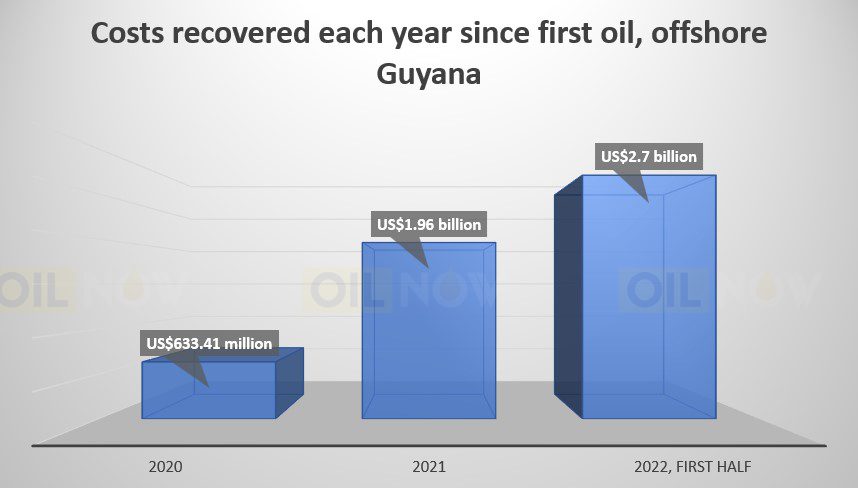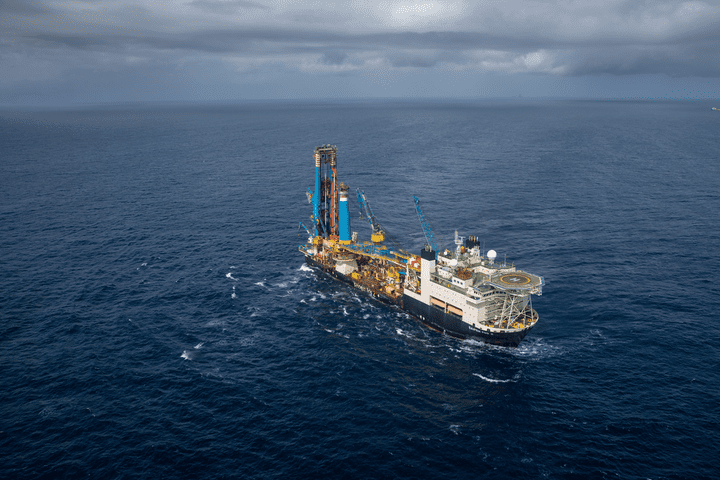Data from the Guyana government and the Stabroek Block co-venturers (COVs) indicates that costs recovered from oil production have already exceeded the development cost for the Liza Phase 1 project.
Following the world-class Liza discovery in 2015, the partners made their final investment decisions on Liza Phase 1 in 2017. ExxonMobil was able to bring the project on stream in December 2019, making it one of the fastest deepwater production ramp ups in history. It is currently in operation with a production capacity of around 140,000 barrels per day.
Builder of Guyana FPSOs now has best delivery time in the world for high-capacity vessels
The COVs invested some US$4 billion into the Liza Phase 1 project.
Recovered costs since first oil and up to June 30, 2022, add up to more than US$5 billion.
Information from ExxonMobil Guyana indicates that the COVs recovered “GY$132.066 billion” or approximately US$633.41 million in 2020.
They went on to recover “GY$408.815 billion” or approximately US$1,960.74 million in 2021, as production ramped up.
As for 2022, a Bank of Guyana Half Year Report indicates that “US$2,709.2 million” or approximately GY$564.868 million was recovered in the first half alone. This steep increase in just six months is due to the addition of the Liza Phase 2 project in February.
In 7 years: 2 massive oil production vessels, 6 drill ships, multiple supply boats
It is notable that the amount recovered each year is on an upward trend. This is due to increased production and, in 2022, high oil prices.
Total costs recovered from 2020 to June 2022 add up to approximately US$5.303 billion or GY$1.105 trillion.

This does not mean that the Liza Phase 1 development cost has already been repaid in full. The COVs made investments prior to its start-up, in seismic operations, exploration drilling, field development, among others. And expenses are generally recovered in the order they are made.
However, the juxtaposition of this total against the cost of Liza Phase 1 shows that the 75% cost recovery ceiling, established in the Production Sharing Agreement, allows for quick recovery of the billions of dollars of investments made by ExxonMobil and its partners to develop projects offshore Guyana. This will ultimately see an increase in Guyana’s profit oil take occurring sooner when costs have been substantially recovered.
Guyana revenue take will increase as oil production climbs
Delving into the merit behind a 75% ceiling on cost recovery, ExxonMobil Guyana’s Treasurer, Katrina Masters has said that ExxonMobil and its partners are “incentivised to spend more upfront to develop as much of the resource as possible, which is ultimately going to result in more profit oil for both the government and the contractor.”
In 7 years: 2 massive oil production vessels, 6 drill ships, multiple supply boats | OilNOW
As new projects come on stream, so too will billions in development expenses. But each project will provide a new source of revenue that ensures costs are recovered at a greater pace. For example, if US$5 billion is recovered in one year, a doubling of production in the next year would see a resultant increase in the monies being recovered.
Current production levels are expected to triple in 2027, with a corresponding increase in the rate of cost recovery expected.



